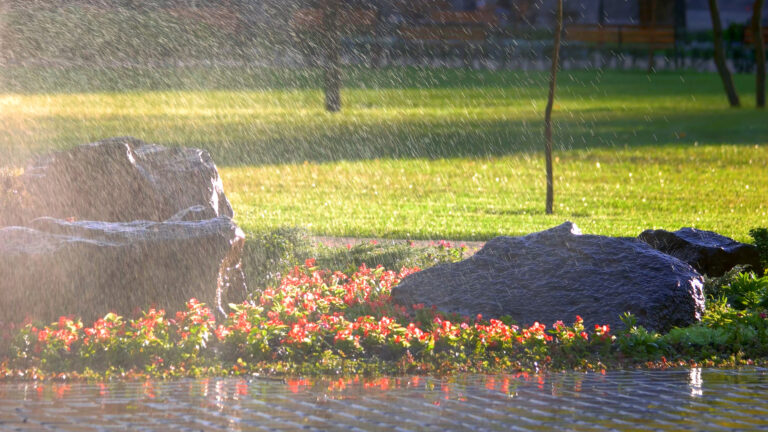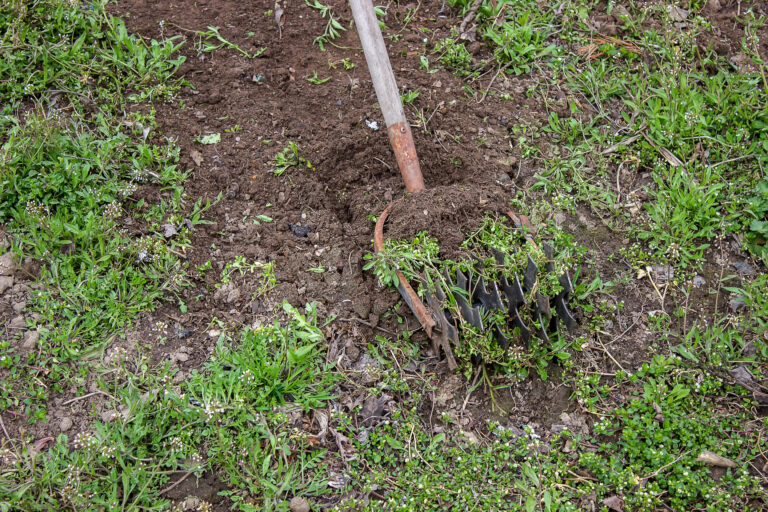Table of Contents

1. Planning and Preparation: The Foundation of Rainy-Day Landscaping
A successful day in the rain begins with proper planning. Professional landscapers make it a point to check weather forecasts to anticipate how the day might unfold. This allows them to:
- Prioritize Tasks: Focus on activities that can be performed in the rain, such as pruning trees or clearing debris, while rescheduling delicate tasks like seeding or paving.
- Gear Up Appropriately: Investing in high-quality rain gear—such as waterproof jackets, pants, gloves, and boots—keeps landscapers dry and comfortable, reducing fatigue and maintaining efficiency. Hats or hoods are also essential to shield the face from persistent drizzle.
Additionally, landscapers protect their tools and supplies by using:
- Waterproof tarps to cover machinery and materials.
- Weather-resistant toolboxes for storing smaller tools.
- Vehicles with built-in storage to safely transport equipment in wet weather.

2. Adjusting Techniques for Wet Conditions
Rainy conditions often demand a shift in landscaping techniques to accommodate slippery surfaces and soggy soil. Seasoned landscapers use methods that minimize disruption and damage, such as:
- Avoiding Lawn Mowing on Wet Grass: Wet grass tends to clump and clog mowers. Instead, landscapers focus on trimming edges, cleaning garden beds, or other maintenance work. If you’d like to explore more about landscaping and lawn care, then read our blog Landscaping vs. Lawn Care: What’s the Big Difference?
- Protecting Soil Structure: Driving heavy machinery on saturated soil can lead to compaction, making it harder for plants to thrive. Landscapers often limit the use of equipment on wet ground or utilize lightweight machinery.
- Rethinking Planting: Planting in heavy rain is usually avoided due to waterlogging risks. Instead, landscapers prepare planting beds or lay mulch to protect soil from erosion. If you’d like to explore options about planting preparation, then read our blog 4 Tips For Preparing Your Garden For Spring [Quick Cheat Sheet].
3. Safety First: Managing Risks in Rainy Weather
Safety is paramount when working in the rain. Landscapers implement strict protocols to reduce the risk of accidents. These include:
- Wearing slip-resistant footwear to maintain traction on wet surfaces.
- Carrying additional hand towels to keep hands and tools dry for a secure grip.
- Using insulated gloves and avoiding power tools near water to prevent electric shock.
- Taking breaks to monitor fatigue, as working in wet conditions can be physically demanding.
For more extreme weather, such as storms or heavy downpours, landscapers know when to pause work and wait for safer conditions.
4. Protecting Tools and Equipment: Extending Their Lifespan
Rain can take a toll on tools and machinery if not properly managed. Experienced landscapers follow best practices to prevent costly repairs and downtime:
- Waterproof Covers: Equipment like mowers, trimmers, and blowers are covered when not in use to shield them from moisture.
- Drying After Use: After a rainy workday, landscapers take the time to clean and thoroughly dry their tools to prevent rust or corrosion.
- Routine Maintenance: Regular checks for water damage, oil levels, and moving parts ensure machinery stays in peak condition for wet-weather challenges.

5. Staying Productive and Positive: Turning Challenges into Opportunities
Rainy days require more than just physical preparedness—they demand a resilient mindset. Landscapers often view rain as an opportunity to tackle tasks that are neglected during dry periods, such as:
- Cleaning and organizing equipment.
- Planning future projects or revisiting designs.
- Performing administrative tasks, like updating client records or creating estimates.
A positive attitude is crucial. Landscapers often share anecdotes about finding unexpected joy in the rain, from spotting rainbows to enjoying the earthy smell of wet soil. Staying motivated not only enhances productivity but also fosters a sense of accomplishment in overcoming tough conditions.
6. The Benefits of Working in the Rain
- Easier Weed Removal: Softened soil makes it easier to pull out weeds by the root. If you’d like to explore options about weed removal, then read our blogs 4 Steps For Getting Rid Of Weeds and 11 Things To Avoid When Removing Weeds.
- Natural Irrigation: Rainwater helps newly planted areas settle and thrive.
- Cooler Temperatures: Overcast skies and lower temperatures provide relief during physically demanding tasks.




